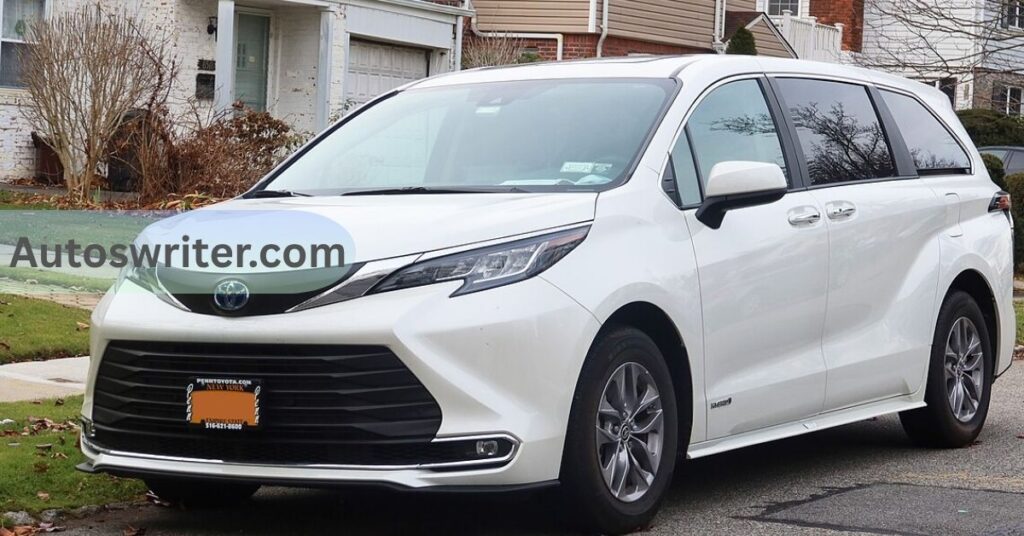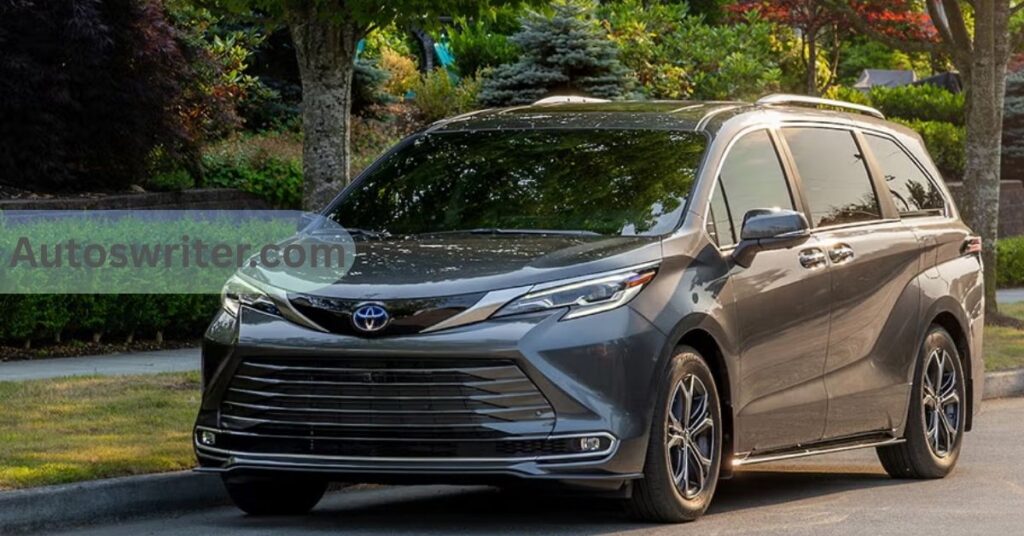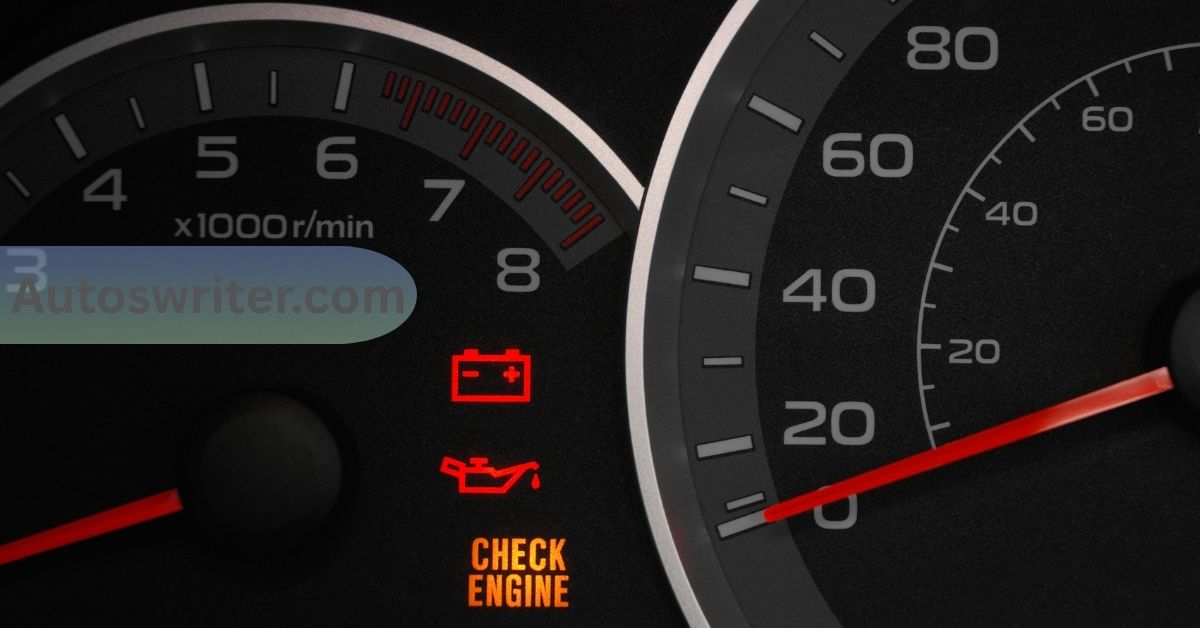A Toyota Sienna typically lasts around 200,000 to 300,000 miles (approximately 15–20 years) when well-maintained. With regular oil changes and maintenance, many Siennas can easily reach 200,000+ miles. Owners report Siennas with 300,000 miles still running well.
On average, you can expect a Sienna to provide at least 150,000–250,000 miles (approximately 10–15 years) of service with proper maintenance. High mileage for a Sienna is often considered to be above 200,000 miles, but many vehicles go much farther if properly maintained.
Toyota Sienna Lifespan with Maintenance:
The lifespan of a Sienna depends on proper care. Regular maintenance extends the life of your vehicle: change the engine oil every 5,000–10,000 miles and replace filters, fluids, brakes, tyres, tyres and other worn items according to the schedule. Toyota’s service guide recommends items such as engine coolant, spark plugs, and timing belt changes by approximately 90,000–100,000 miles (around 8–10 years).
If these are done, the engine and transmission can last a very long time. For example, owners report that a 2006 Sienna continued to run strong at 240,000 miles after its timing belt and water pump were changed at 110,000 miles. Replacing the timing belt on older Siennas, typically around 90,000–100,000 miles, is recommended to avoid engine damage.
Key maintenance items include:
- Engine oil and filters: Change every 5,000–8,000 miles. Synthetic oil helps.
- Fluids: Transmission fluid every 60k–100k mi, coolant every 100k mi, brake fluid, differential fluid if AWD, etc.
- Filters: Air and cabin filters are replaced every 30,000 miles or so.
- Tires & brakes: Rotate tyres often and replace them as needed. Brake pads usually last 30,000–50,000 miles, depending on use.
- Spark plugs and belts: Spark plugs around 120,000 miles; serpentine belt ~90,000 miles.
- Suspension & Steering: Inspect shocks, struts, and ball joints at 100,000 miles; replace if worn.
- Other wear items: battery, wipers, fuel filter, and PCV valve, as needed.
Skipping maintenance can shorten life. For example, letting coolant or timing components wear out can cause engine failure.
High-Mileage Toyota Sienna Real-World Examples:

Many Toyota Siennas reach very high mileage. On Sienna owner forums, people share stories of vans hitting 300k miles. One owner celebrated reaching 300,000 miles on a 2000 model (and counting). Another noted, “tons of folks out there with 300,000+ miles on their Siennas. If it’s clean and well taken care of, I wouldn’t be scared of it”. Another posted that his wife’s 2010 Sienna had 332,000 miles and “still runs like a champ.”.
In Canada, high-mileage Siennas also appear. (For example, on Canadian auto forums, owners report Siennas well over 300,000 km, often with original engines.) A 2011 Sienna with 265,000 miles (approximately 426,000 km) had been running great after new parts were replaced as needed.
These real-world stories show that with care, Siennas often outlast other minivans.
Factors Influencing the Lifespan of Toyota Sienna:
Several factors affect how long your Sienna lasts:
1. Maintenance level:
Well-maintained vans last far longer. Staying on schedule with oil and fluid changes, addressing minor issues promptly, and following the service guide can add years to your vehicle’s lifespan. As one user said, their Sienna with 200k miles was fine if “well-maintained” and mostly highway-driven. In contrast, a neglected van might only reach 100k–150k before major wear sets in.
2. Driving style:
Gentle driving (avoiding hard acceleration, heavy towing beyond limits, or off-road abuse) helps longevity. Frequent stop-and-go city driving can wear brakes and engines more than highway driving.
3. Climate and environment:
Cars in cold or hot temperatures, or those with road salt usage, may experience more corrosion. Rust on the undercarriage or suspension can be a significant issue, particularly in northern regions. Regular underbody washes in winter help.
4. Usage:
Vehicles used for light loads and steady use (like highway commuting) often last longer. Vans used as heavy-duty work vehicles or taxis accumulate more wear. Interestingly, Siennas have been popular as Ubers/taxis because of “low maintenance cost and high dependability”.
In short, the better cared for and easier the conditions, the longer a Sienna will run. A gently used, dealer-maintained Sienna will outlast a neglected one in harsh conditions.
Also Read: Orange Exclamation Mark on Dashboard Toyota – What It Means
Maintenance and Repairs Sienna Over Time:
Owning a Sienna means periodic repairs. Here are typical fixes as mileage climbs:
1. By 50k–100k miles:
Expect new brake pads/rotors, fresh tyres, a new battery, new spark plugs, and maybe a new serpentine belt. Transmission fluid and coolant should be replaced around 60–100k. Struts and shocks often start to leak around 100,000 miles and may need replacement.
2. Around 100k miles:
The timing belt (on older models) and water pump should be replaced if not done already. The shop manual recommends several inspections at this point (see Toyota’s 100,000-mile checklist). Fuel pumps or oxygen sensors can fail. Expect to replace drive belts, hoses, and perhaps transmission mount(s).
3. 150k–200k miles:
Major service items include windshield wiper motors, window motors, power sliding door cables (a known wear item), and possibly ignition coils if misfires occur. Some owners report developing oil leaks (e.g., valve cover gasket, timing cover leak on the 3.5L V6, etc.). The heads and gaskets are usually reliable, but a leaking water pump or thermostat housing may require repair. The suspension (including control arms, ball joints, and strut mounts) often involves work in this range.
4. 200k–300k+ miles:
At this stage, the van may require a suspension rebuild (including new struts, shocks, and bushings), a rebuilt or new alternator, and possibly a rebuilt transmission or clutch (if it’s manual, although the Sienna is almost always automatic). Alternator and starter motors are commonly prone to wear and tear. The catalytic converter may need replacement if it clogs (often around 200k). Rubber parts, such as engine mounts, transmission mounts, bushings, and seals, will likely have required replacement by now.
5. Others:
The power sliding door cable or actuator often breaks on older Siennas. One top complaint about a 2004 model is that “Cable for automatic sliding doors split and broke”. So, sliding-door repairs are common in older Siennas. Additionally, some years had dashboard panel cracks (CarComplaints notes that the 2004 Sienna’s dash cracking was a frequent issue).
Keeping up with scheduled maintenance (like Toyota’s 90k and 100k mile services) helps avoid significant issues. For example, owners say that doing 5,000-mile oil changes and fresh fluids regularly “helped” a Sienna keep running past 200,000 miles.
Toyota Sienna Common Issues by Model Year:

Different Sienna generations have their quirks:
1. 1st generation (1998–2003):
Early Siennas are equipped with either the 2.2L or 3.0L engines, featuring timing belts and chain, as well as some older transmission issues. They are generally robust, but rust and body issues (like sliding door seals) can pop up on ancient ones. The hybrid (Previa-inspired) Sienna was only available for one year (1998) and featured a 4-cylinder engine; its design is rarely discussed today.
2. 2nd gen (2004–2010):
Many consider these extremely durable. The 3.3L V6 was very reliable. Known problems: Sliding door cables break (CarComplaints ranks this as the #1 problem for 2004 models). Some 2004–2006 models had sudden unintended acceleration scares (mostly throttle-related recalls). A few had a cracked weld in a door. The worst model year by complaint count is 2007, but even that year is not a disaster. Overall, second-gen Siennas have a legendary reputation for longevity.
3. 3rd gen (2011–2020):
Early third-gen Siennas are also very reliable. Owners, in particular, praise the 2012–2014 models. One Sienna enthusiast advised avoiding 2017 because it introduced a new drivetrain that had “issues”. In general, 2017 (the start of a refresh) had more reported problems.
Car Complaints lists 2007 as the worst overall, but a Sienna Reddit user warned, “2017 is the absolute last year I would pick… introduced a new drivetrain and was a rocky introduction”. On the plus side, features like AWD became very capable, and Toyota ironed out issues after 2017.
4. 4th gen (2021–present):
These are hybrid-only (3.5L V6 hybrid). Too new for long-term data. Hybrids in other Toyotas are generally tough, but long-term reliability still needs monitoring. Early reports are positive, although some owners note that the new infotainment and electronics require updates. Since hybrids have different powertrains, future maintenance will include hybrid battery checks, but Toyota tends to warranty those well.
So, in summary, Siennas from about 2012–2014 is considered very reliable, while 2007 (the worst on paper) and 2017 (with new design glitches) had relatively more issues.
Also Read: Toyota CVT Issues-A Complete Guide
Lifespan Compared Toyota Sienna to Other Minivans:
1. Honda Odyssey:
The Honda Odyssey is the closest rival to the Sienna. Odysseys also often hit 200k+ miles. RepairPal gives the Odyssey a 3.5/5 reliability rating (the same as the Sienna). Owners say an Odyssey with “original engine and transmission at 300,000 miles” is possible.
However, Odysseys have experienced some transmission issues (especially models from 2014 to 2017), so regular fluid changes are essential. Overall, Sienna and Odyssey are neck-and-neck in terms of longevity, both known to reach over 250,000 miles with proper care.
2. Chrysler Pacifica (and Town & Country):
These generally do not last as long. Early Chrysler minivans (2000s) suffer carbon buildup issues around 130k miles and engine ticking from lifter problems. Newer Pacifica (2017+) has been plagued by 9-speed transmission failures, sometimes under warranty.
Many owners required transmission replacements between 30,000 and 60,000 miles. Even though Dodge/Chrysler repaired them under recall, the Pacificas become far less predictable at high mileage. We cannot confidently say that a Pacifica will reach 200,000 miles without major repairs.
3. Kia Sedona (Carnival):
Surprisingly, the Kia Sedona/Carnival is quite reliable. RepairPal gave it a 4.0/5 rating (the highest among minivans). It “can easily last over 200,000 miles” with upkeep. Common Sedona issues (like timing-chain noise around 90k) exist, but overall, Sedona has lower maintenance costs than rivals. In practice, Siennas often outlive Sedonas because Toyota uses more durable materials; however, a well-cared-for Sedona still reaches 200k+.
4. Others:
The Dodge Grand Caravan (the old minivan) can run for a long time, but its parts wear out (e.g., AWD case fluid, CV joints). Volkswagen Routan (rebadged Dodge) had the same issues. Overall, the Toyota Sienna is among the longest-lasting minivans, similar to the Honda.
How Owners Make Toyota Siennas Last:

To squeeze maximum life out of a Sienna, owners recommend:
- Keep up with maintenance: Follow the Toyota’s scheduled maintenance. Change oil on time and inspect belts, brakes, and fluids. Address warning lights right away.
- DIY checks: Many owners check things themselves (for example, one Reddit user saved money by diagnosing a sliding door latch himself). Even if you’re not a mechanic, basic skills (like changing spark plugs or brake pads) can be helpful.
- Use high-quality parts: Opt for OEM or reputable aftermarket parts. One owner said quality filters and fluids helped her 2006 Sienna.
- Prevent rust: Wash the underside when driving in snow or salt country. Fix any rusted brake lines or body panels.
- Drive gently: Avoid towing beyond specifications (the Sienna’s tow limit is ~3,500 lbs). Let the engine warm up in winter. Don’t carry excessive weight regularly.
- Storage: If parking long-term, use a car cover or garage to protect from weather. Replace tyres and batteries before they fail.
- Monitor recalls/TSBs: There have been recalls (e.g. sliding door actuator recalls in the mid-2000s). Check NHTSA or Toyota sites for any open recalls on your model.
By doing these, many owners report no “major” breakdowns. As one said, with 200k miles, “I don’t hesitate to take it anywhere” if maintained.
Frequently Asked Questions:
Q.1 Is 150,000 miles too much for a used Toyota Sienna?
No. A Sienna with 150k miles is often just broken in. Many owners have vans double that mileage. If it has been adequately maintained (with records of oil changes and services) and looks healthy, $150,000 is not a deal-breaker.
Q.2 Can a Toyota Sienna reach 300,000 miles?
Yes. As noted, dozens of owners report 300k+ miles on their Siennas. With proper care, reaching 300k miles is realistic.
Q.3 What are the most reliable Sienna years?
Generally, the second generation (2004–2010) and early third-gen (2011–2016) are very reliable. Owners, in particular, praise the models from 2012 to 2014. Be cautious of 2007 (due to more complaints) and 2017 (a redesign year with drivetrain issues).
Q.4 What is the average repair cost after 150,000 miles?
Siennas have moderate maintenance costs. RepairPal shows that the average annual repair and maintenance cost is about $554. After 150k, expect some larger jobs (such as struts or a timing belt), but overall costs remain reasonable compared to luxury cars. Staying up to date on maintenance often prevents costly repairs.
Q.5 Should I buy a used Sienna with over 100,000 miles?
Yes, if it’s in good condition. A well-maintained, high-mileage Sienna can be a great value. Check maintenance records and inspect the interior and exterior for well-maintained conditions. As one owner said, a clean, cared-for, high-mileage Sienna “wouldn’t scare me”. Make sure to have it inspected, but don’t rule it out simply because it has 100k+ miles.
Conclusion:
In summary, a Toyota Sienna is built to last. With proper care, expect at least 200,000 miles and 12+ years of service. Many reach 300,000 or more, thanks to a durable engine and drivetrain. Its longevity rivals the best minivans.
Factors such as maintenance, driving style, and environment play a significant role. Regular servicing and gentle use help it run past 300,000 miles. Compared to competitors, the Sienna is on the high end of minivan lifespan. Choosing the most reliable model years (2012–2014) and fixing issues early will help your Sienna last as long as possible.



